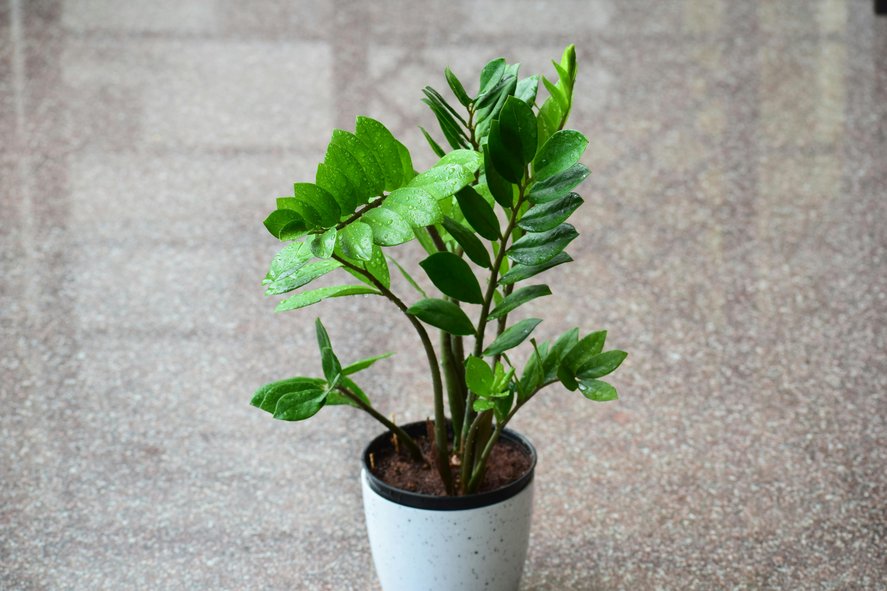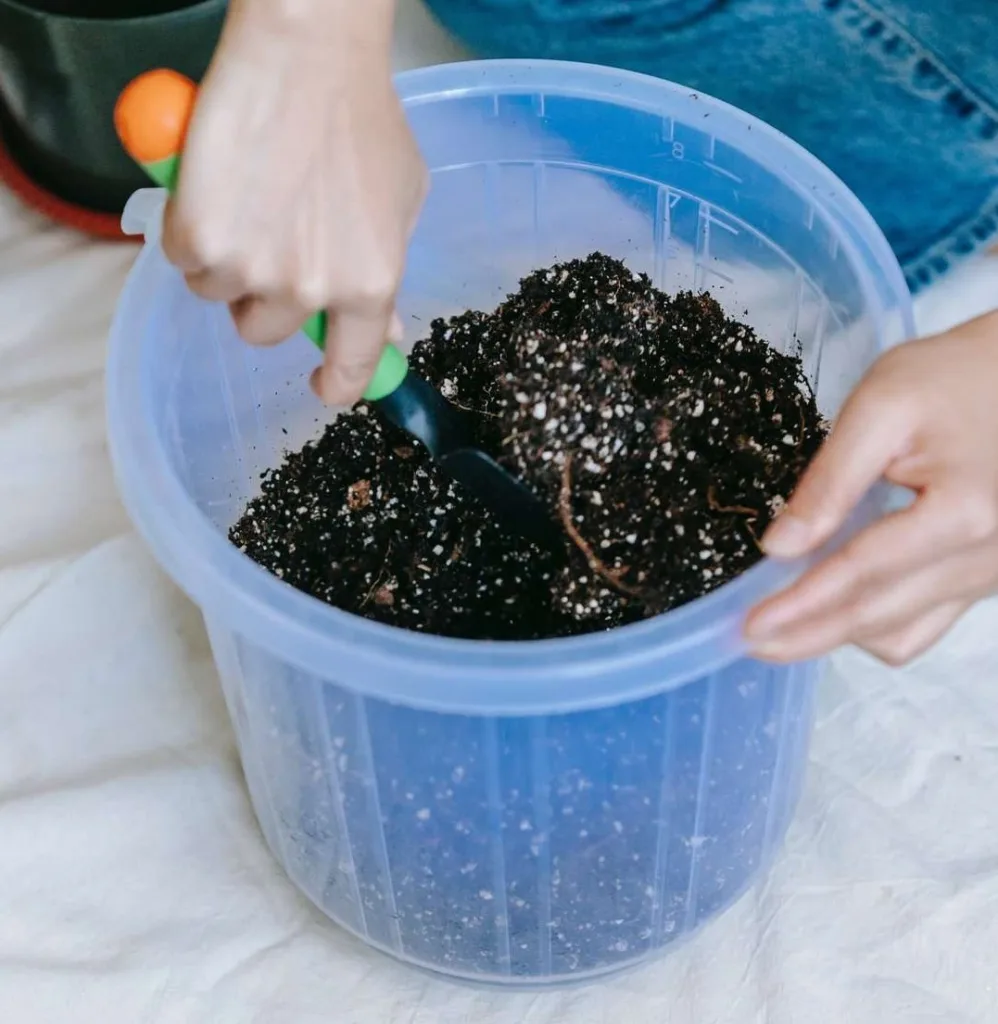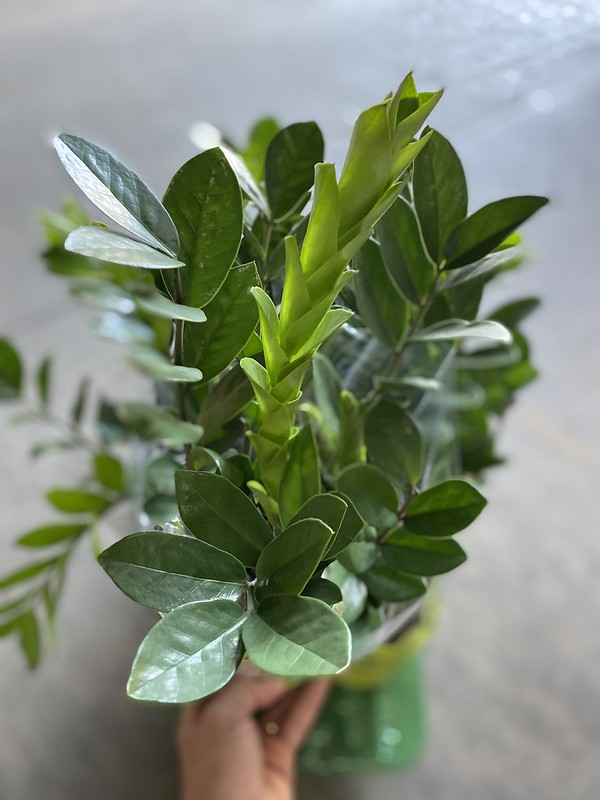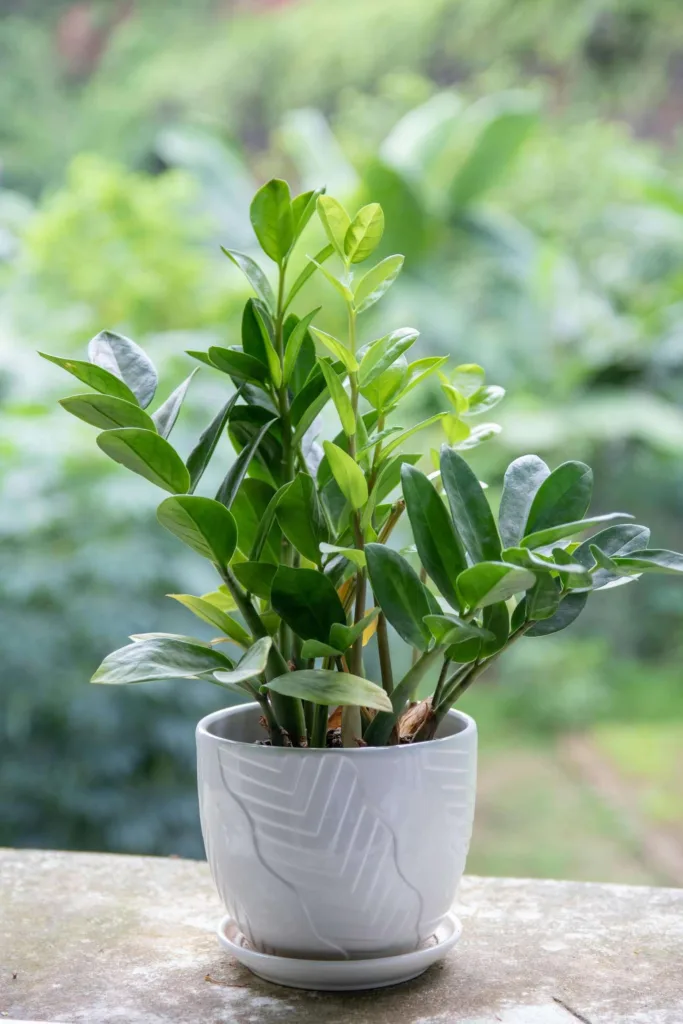Welcome to our comprehensive guide on how to plant, grow, and care for one of the most resilient and attractive houseplants, the Zamioculcas.
Whether you are a beginner or an experienced plant lover, this article will provide you with all the essential information you need to cultivate and nurture a thriving Zamioculcas.
From selecting the right potting mix to understanding watering requirements and pest management, we’ve got you. So, let’s dive in and unlock the secrets behind successful Zamioculcas care!
What is Zamioculcas
Zamioculcas, commonly known as the Zanzibar Gem, Eternity Plant, ZZ Plant, is a popular and resilient houseplant admired for its attractive glossy leaves and ease of care.
Native to Eastern Africa, particularly Zanzibar, and blooms in low-light conditions, the ZZ Plant has become a favorite choice for indoor gardening lover.
With its attractive appearance, low-maintenance nature, and air-purifying qualities, the ZZ Plant has become a popular choice for indoor plant lovers, bringing a touch of the tropics to homes and offices.
| Characteristic | Details |
|---|---|
| Scientific Name | Zamioculcas zamiifolia |
| Common Name | ZZ Plant, Zanzibar Gem, Eternity Plant |
| Family | Araceae |
| Origin | Eastern Africa, specifically Zanzibar |
| Foliage | Glossy, dark green, lance-shaped leaves |
| Leaf Structure | Composed of numerous leaflets along a central stem |
| Hardiness | Highly resilient, known for withstanding neglect |
| Light Requirements | Thrives in low-light conditions, can tolerate brighter light |
| Watering Needs | Drought-tolerant, prefers infrequent watering, allow soil to dry out between waterings |
| Toxicity | Toxic if ingested, keep away from pets and children |
| Propagation | Typically through division, separating healthy rhizomes and potting them |
| Air-Purifying Qualities | Recognized for its ability to purify indoor air by removing certain toxins |
| Growth Habit | Upright growth habit, slow grower, mature height of 2 to 3 feet |
| Container Gardening | Well-suited for container gardening, often potted in decorative containers or baskets |
| Temperature Range | Prefers average room temperatures between 65°F to 75°F (18°C to 24°C) |
| Soil Requirements | Well-draining potting soil to prevent waterlogging |
| Common Uses | Interior décor in homes and offices, adds a touch of greenery to indoor spaces |

Key Characteristics of Zamioculcas
Foliage: The ZZ Plant is characterized by its glossy, dark green leaves that are smooth, lance-shaped, and composed of numerous leaflets along a central stem. The leaflets are thick and fleshy, giving the plant a succulent-like appearance.
Hardiness: Renowned for its durability and ability to withstand neglect, the ZZ Plant is well-suited for environments where other plants might struggle.
It is adaptable to a range of conditions, making it an ideal choice for beginners or those with busy lifestyles.
Low-Light Tolerance: ZZ Plants thrive in low-light conditions, making them suitable for areas with minimal natural sunlight.
While they can tolerate brighter light, they should be shielded from direct sunlight, which can scorch their leaves.
Watering Needs: ZZ Plants are drought-tolerant and prefer infrequent watering. Allow the soil to dry out between waterings to prevent overwatering, which can lead to root rot. This plant is well-suited for those who may forget to water regularly.
Toxicity: Like many houseplants, ZZ Plants are toxic if ingested. Keep them out of reach of pets and small children.
Propagation: Propagating ZZ Plants is typically done through division. Healthy rhizomes can be separated and potted to create new plants. Propagation is relatively straightforward, and new shoots emerge from the rhizomes.
Air-Purifying Qualities: The ZZ Plant has been recognized for its air-purifying abilities, removing certain toxins from indoor spaces. This makes it a valuable addition to homes and offices.
Container Gardening: ZZ Plants are well-suited for container gardening and are often potted in various decorative containers or baskets, adding a touch of greenery to interior spaces.
Growth Habit: ZZ Plants have an upright growth habit, and mature specimens can reach a height of 2 to 3 feet.
They are slow growers, and their architectural form makes them a striking addition to contemporary or minimalist décor.

Selecting the Perfect Spot for Your Zamioculcas
Zamioculcas, also known as the ZZ plant or the eternity plant, is renowned for its adaptability to various light conditions.
However, to achieve optimal growth, it is important to find the perfect spot for your Zamioculcas. Here are a few key considerations:
Indirect Light: While Zamioculcas can tolerate low light conditions, they thrive in bright, indirect light. Avoid placing your plant in direct sunlight as it may scorch the leaves.
Temperature: Room temperatures between 60-75°F (15-24°C) are ideal for Zamioculcas. Avoid exposing your plant to extreme cold or hot drafts.
Humidity: Zamioculcas is an excellent choice for homes with dry air, as it can tolerate low humidity levels. However, it appreciates an occasional misting to provide a slightly more humid environment.
Choosing the Right Potting Mix
The right potting mix is crucial for ensuring the health and vitality of your Zamioculcas. As a drought-tolerant plant, it requires well-draining soil that allows excess water to escape.
Here’s a simple recipe for a suitable potting mix for your Zamioculcas:
- Combine equal parts of peat moss, perlite, and quality potting soil.
- Add a small amount of sand or vermiculite to enhance drainage.
- Mix thoroughly until you achieve a lightweight and airy texture.
Planting Your Zamioculcas
Now that you have your potting mix ready, it’s time to plant your Zamioculcas. Follow these steps for a successful planting process:
- Select a pot with drainage holes to prevent waterlogging.
- Place a small layer of drainage material, such as pebbles or broken pottery, at the bottom of the pot.
- Gently remove your Zamioculcas from its nursery container, being careful not to damage the roots.
- Position the plant in the center of the pot and fill the sides with the prepared potting mix.
- Press down lightly to secure the plant and ensure there are no air pockets.
- Water the newly potted Zamioculcas until moisture begins to seep out of the drainage holes.

Watering and Feeding Guidelines
Proper watering and feeding are crucial for the healthy growth of your Zamioculcas. Follow these guidelines to maintain an optimal watering schedule:
Watering: Zamioculcas is highly resilient and can tolerate periods of drought. It is important to let the top two inches of the soil dry out before watering again.
Overwatering can lead to root rot, so make sure the potting mix is dry before watering your plant. Remember, it is better to underwater than to overwater your Zamioculcas.
Feeding: Zamioculcas is a light feeder and does not require frequent fertilization. During the growing season, which typically spans from spring to early fall, apply a balanced, water-soluble fertilizer once every two months. Dilute the fertilizer according to the manufacturer’s instructions to avoid burning the roots.
Pruning and Propagation Techniques
Pruning and propagation are essential for maintaining the shape of your Zamioculcas and expanding your plant collection. Here’s how to go about it:
Pruning: Zamioculcas has a naturally bushy growth habit, but occasional pruning can help maintain its compact shape.
Remove any dead or yellowing leaves by cutting them at the base. Additionally, you can trim back any leggy stems to encourage new growth.
Propagation: Zamioculcas can be propagated through leaf cuttings or division. To propagate via leaf cuttings, select a healthy leaf and cut it into sections (around 2-3 inches in length).
Allow the cut ends to callus for a few days, then plant them in a well-draining potting mix. With proper care, these cuttings will develop roots and give rise to new plants.
Common Pests and Diseases
Despite its resilience, Zamioculcas may occasionally face pest infestations or diseases. Here are some common issues to watch out for and how to address them:
Spider Mites: These tiny pests can cause leaf discoloration and webbing. Use a gentle insecticidal soap or spray the affected leaves with a mixture of water and a few drops of dish soap to control spider mites.
Mealybugs: These white, cotton-like pests can be found in clusters on the leaves and stems. Remove them manually or wipe affected areas with a cotton swab dipped in rubbing alcohol.
Root Rot: Overwatering or poorly draining soil can lead to root rot. If you notice yellowing leaves, mushy roots, or a foul smell, take immediate action. Allow the plant to dry out, repot it in fresh, well-draining soil, and adjust your watering practices.
| “The zamioculcas, with its striking appearance and low-maintenance nature, is truly a plant lover’s dream. Whether you’re a newbie to the world of houseplants or a seasoned pro, this versatile plant will captivate you with its beauty and adaptability. So, why not invite a zamioculcas into your home and witness the wonder of nature right before your eyes?” |

Conclusion
Congratulations on reaching the end of our comprehensive guide on how to plant, grow, and care for Zamioculcas!
By following the tips and techniques outlined in this article, you can create an ideal environment for your Zamioculcas to thrive.
Remember to provide it with the right amount of light, well-draining soil, and a watering schedule that suits its drought-tolerant nature.
With patience and care, your Zamioculcas will reward you with lush green foliage and add a touch of elegance to any indoor space.
So why wait? Start your Zamioculcas journey today and enjoy the beauty and resilience of this remarkable plant!
FAQs
Certainly! Here are the FAQs for Zamioculcas (ZZ Plant) in shorts:
Is Zamioculcas a lucky plant?
The ZZ plant is often considered a symbol of prosperity and good fortune. While opinions on lucky plants can vary, many people believe that having a ZZ plant in their home or office brings positive energy.
Is ZZ plant a good house plant?
Yes, the ZZ plant is an excellent house plant. It is known for its resilience, low maintenance requirements, and ability to thrive in low-light conditions. It’s a popular choice for both beginners and experienced plant enthusiasts.
Does Zamioculcas need sunlight?
ZZ plants can tolerate low light conditions, and they are often recommended for areas with indirect light. While they can adapt to various light levels, they should be protected from direct sunlight, which can scorch their leaves.
What are the benefits of ZZ plant to humans?
ZZ plants are not only aesthetically pleasing but also offer potential benefits to indoor environments. They are known for their air-purifying qualities, removing certain toxins from the air.
Additionally, caring for plants like ZZ can have positive effects on mental well-being, providing a sense of accomplishment and connection with nature.
